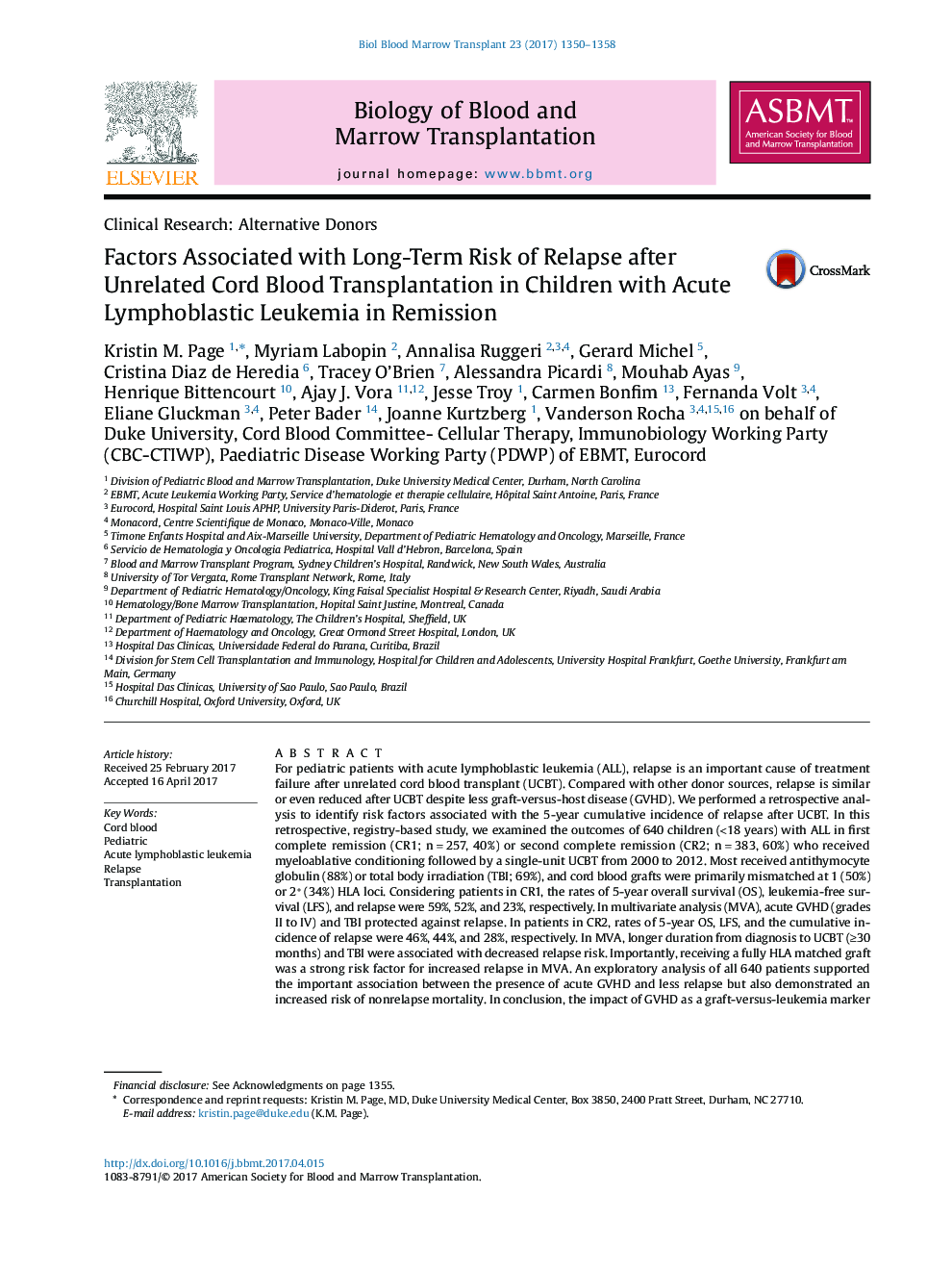| Article ID | Journal | Published Year | Pages | File Type |
|---|---|---|---|---|
| 5524121 | Biology of Blood and Marrow Transplantation | 2017 | 9 Pages |
â¢Acute GVHD was protective of relapse after UCBT for children with ALL in first or second remission.â¢TBI-containing regimens improved outcomes after UCBT for pediatric ALL.â¢Risk of relapse after UCBT in second remission was lower using mismatched grafts.
For pediatric patients with acute lymphoblastic leukemia (ALL), relapse is an important cause of treatment failure after unrelated cord blood transplant (UCBT). Compared with other donor sources, relapse is similar or even reduced after UCBT despite less graft-versus-host disease (GVHD). We performed a retrospective analysis to identify risk factors associated with the 5-year cumulative incidence of relapse after UCBT. In this retrospective, registry-based study, we examined the outcomes of 640 children (<18 years) with ALL in first complete remission (CR1; nâ=â257, 40%) or second complete remission (CR2; nâ=â383, 60%) who received myeloablative conditioning followed by a single-unit UCBT from 2000 to 2012. Most received antithymocyte globulin (88%) or total body irradiation (TBI; 69%), and cord blood grafts were primarily mismatched at 1 (50%) or 2+ (34%) HLA loci. Considering patients in CR1, the rates of 5-year overall survival (OS), leukemia-free survival (LFS), and relapse were 59%, 52%, and 23%, respectively. In multivariate analysis (MVA), acute GVHD (grades II to IV) and TBI protected against relapse. In patients in CR2, rates of 5-year OS, LFS, and the cumulative incidence of relapse were 46%, 44%, and 28%, respectively. In MVA, longer duration from diagnosis to UCBT (â¥30 months) and TBI were associated with decreased relapse risk. Importantly, receiving a fully HLA matched graft was a strong risk factor for increased relapse in MVA. An exploratory analysis of all 640 patients supported the important association between the presence of acute GVHD and less relapse but also demonstrated an increased risk of nonrelapse mortality. In conclusion, the impact of GVHD as a graft-versus-leukemia marker is evident in pediatric ALL after UCBT. Strategies that promote graft-versus-leukemia while harnessing GVHD should be further investigated.
